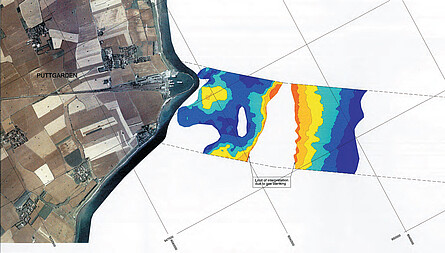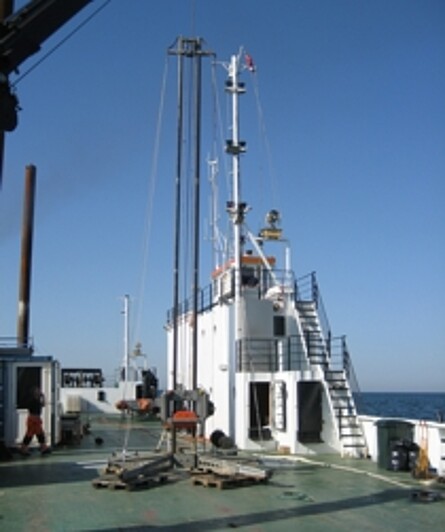Multi-Proxy Analyses aimed at reconstructing the late- and post-glacial development of the Fehmarn Belt
Within the scope of scientific investigations carried out alongside the planned transit route across the Fehmarn Belt, five sediment cores were drilled and analysed in a joint project between the NIhK – represented by Dr. Steffen Wolters und Dr. Dirk Enters –, the Archaeological Service of the State of Schleswig-Holstein, the Viking Ship Museum Roskilde and the work group GEOPOLAR at Bremen University. The analyses also included the sediments diatoms (Katharina Blume, NIhK/ Rostock Univ.), pollen (Dr. Martin Theuerkauf, Greifswald Univ.) and geochemistry. The main aim of these Multi-Proxy Analyses was a high-resolution reconstruction of the local and regional landscape development in conjunction with AMS radiocarbon determinations of various fractions (bulk, plant macro remains, pollen concentrate, molluscs, bryozoans) in order to establish a reliable chronology. Questions concerning the duration of the Ancylus Phase and the beginning of the Littorina Transgression were at the focus of the investigations. In so doing, the project makes an important contribution towards the study of the late- and post-glacial environment history in the southern Baltic region. Further information can be found here.
Bibliography
Enters, D., Wolters, S., Blume, K., Theuerkauf, M., Lücke, A., & Segschneider, M. (2015): Multiproxy-Analysen zur spät- und postglazialen Entwicklungsgeschichte des Fehmarnbelts. Siedlungs- und Küstenforschung im südlichen Nordseegebiet, 38, 43–58.
Wolters, S., Enters, D., Blume, K., Fey, M., Larres, I. & Segschneider, M. (2011): Multi-Proxy Analysen zur Rekonstruktion der spät- und postglazialen Entwicklungsgeschichte des Fehmarnbelts. Nachrichten des Marschenrates zur Förderung der Forschung im Küstengebiet der Nordsee, 48: 88–89.


